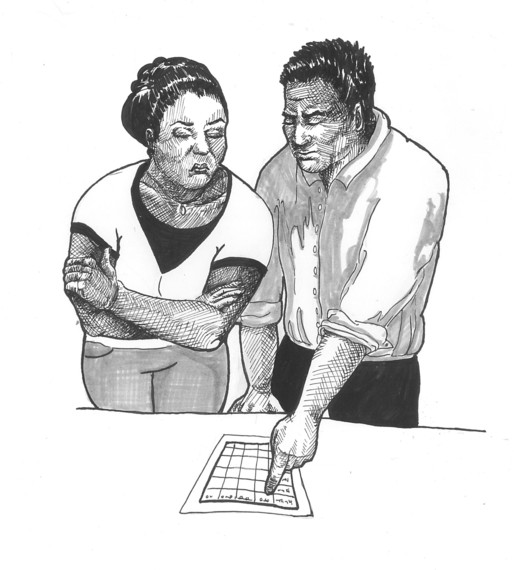Coercive Control is not about one partner simply being "bossy" or "a nag;" it's about domination.
Controlling people often micromanage their partners' everyday life -- restricting their activities and planning their time with a detailed schedule. Abusers try to govern how their partners express emotions, what they watch on television, and which sites they visits on the Internet. An abuser might require his partner to stop talking to the cat, to sleep on her back, and to fold her clothes a certain way. Each day, he might decide what clothes she will wear and require rituals related to hygiene, exercise, or beauty. He may say he is doing all this because he "cares about her" and "wants her to be her best." Implied in each one of the demands is the assertion, "If you do not do what I say, I will punish you." That punishment could come in the form of insults, "the silent treatment," or even physical violence. People who are victimized are forced to comply with their partners' wishes to avoid uncomfortable or dangerous conflicts. This submission reduces conflict in the short term but contributes to a victim's long-term isolation and sense of being smothered.
A controlling man* often exerts his control in spheres that pertain to women's typical gender roles. For instance, he might make elaborate demands regarding keeping house, preparing food, personal appearance, child care, and sex. An abuser might require that his partner put food into the shopping cart or cabinets in a certain way. He may demand that she iron his socks and underwear or attend to household chores on an inflexible schedule, even when she is ill.
This extreme behavior is different from a situation where the man is simply rigid and overly particular. In coercive control, the abuser's expectations become demands that his partner must fulfill with little regard to her own preferences or well-being, and she faces consequences for disappointing him.
Here's an example of micromanagement in a coercive control relationship:
Neighbors thought "Lucinda" and her husband, "Marty," lived a charmed life with their two children in a tidy home. However, the true nature of their relationship was hidden. Marty forbade Lucinda to leave the house without him, and insisted she keep the blinds drawn at all times. He demanded that she keep a record of her activities every half hour. He required her to dress in extremely revealing clothing and high heels when he paraded her around town. He chose her nail polish and demanded that her hair be perfect at all times. Dinner was to be on the table at 6 pm and the television off at 9:00 p.m. Marty required Lucinda to go to bed at the same time as their young children, so he could have some time "by himself" each night. She suspected that he used this time to live a secret life on the Internet. When he came into their bedroom hours later, he demanded sex. Lucinda loved her husband and children but she also felt trapped by her husband's restrictive demands.
Even when micromanaged, people turn toward freedom just as a sunflower turns toward the sun. People who are subject to their partner's control find ways to secretly defy them, for instance by "accidentally on purpose" doing things "wrong" or thinking "forbidden" thoughts.
With the help of a domestic violence advocate or a therapist who understands coercive control, many people who are victimized become clearer about their limits, and some decide to end their relationships. After a period of adjustment, experiencing freedom tastes unbelievably sweet -- in contrast to a life lived under another person's thumb.
Interested in learning more about micromanagement and coercive control? Check out my book, Invisible Chains: Overcoming Coercive Control in Your Intimate Relationship.
*I'm writing here about the most common situation, where men control their wives and girlfriends, but victims and victimizers can be of any gender or sexual orientation.
